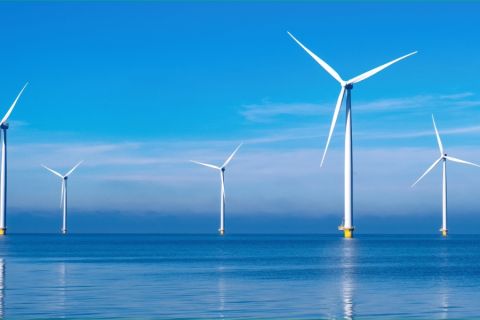In 1968 Garrett Hardin published the manuscript “The Tragedy of the Commons.” In his essay, Hardin described a hypothetical open pasture where cattle owners
maximize individual financial gain by growing the size of their herd. However, each cattle owner increasing the number of cows in their herd increases the aggregate amount of grazing on the pasture. Initially, the negative effects of increased feeding are not well understood or costly enough to affect continued cattle population growth. However, as Hardin noted, “a finite world can support only a finite population.” As the cattle owners continue to act according to their self-interest in pursuit of additional financial gain, the pasture reaches a point at which it can no longer support the grazing of any of the herds.
The notion and result of a “tragedy of the commons,” the conflict between shared (or unregulated) use of a finite resource and interests of the individual users, appears in many real-world situations, from overfishing fish populations to clear-cutting of forests. Moreover, the concept is not limited to just taking from a shared system. For example, in the case of air or water pollution, a tragedy of the commons can occur by the addition of harmful constituents to a resource that users collectively breathe or drink.
Permian pressure
Similarly, in the Permian Basin of West Texas and eastern New Mexico, excess water from oil and gas production disposed into subsurface formations of finite capacity can lead to deleterious consequences for further oil and gas development.
A substantial amount of associated water is produced with conventional and unconventional Permian Basin oil and gas extraction. In 2017 more than 2 Bbbl were produced, more than 1.5 times the produced volume of oil and gas (in oil equivalents). In contact with surrounding rock and organic matter for millions of years, this water contains a highly concentrated assemblage of dissolved organic and inorganic constituents (several times the salt concentration of seawater), of which some are toxic, carcinogenic and radioactive. Consequently, current opportunities for utilization outside oil and gas applications are small. However, despite the hundreds of thousands of barrels of water needed to hydraulically fracture each new horizontal well (for which produced water could be used), there remain as much as 30 Bbbl of excess water expected to be produced within the next decade.
Currently, the predominant disposition strategy for excess produced water in the Permian Basin is subsurface disposal. While the capacity of these zones for produced water disposal is fundamentally dictated by accessible and available rock pore volume, operationally, the primary capacity constraint is subsurface pressure. The pressure state of the Permian Basin disposal zones results from a combination of the natural, predevelopment pressure of the system, the slow increase in pressure resulting from cumulative water disposal and the more rapid pressure changes occurring near an injection well(s). The rate and volume of water injection must be managed to keep fluid pressure below the fracture pressure of the rock, which represents the absolute capacity for disposal and to maintain formation integrity and minimize the risk of fluid migration from the disposal zones.
Other factors beyond capacity also affect the efficacy and suitability of subsurface disposal.
Seismicity concerns
Even below fracture pressure, increased pressure due to produced water injection has been linked to increased seismicity in the Permian Basin. Measurements from Texas’ Bureau of Economic Geology seismic monitoring network (TexNet) show a significant increase in the frequency of near-term seismic activity—of the 141 recorded events in the Texas extent of the Permian Basin since 1980, 135 occurred after 2013. Additionally, elevated pressure in shallow disposal zones, located above the main petroleum-bearing unconventional horizons, has led to general drilling delays, increased stuck-pipe events, more wellbore failures and extra casing strings, adding hundreds of thousands of dollars to drilling and completion costs for individual wells.
There is growing concern that business-as-usual water disposal may result in suboptimal use of limited subsurface disposal capacity; more widespread, frequent and powerful seismic events; and elevated subsurface pressure that jeopardizes the economic viability of Permian Basin oil and gas development.
Information needs
The Nobel Prize winning economist Richard Thaler and co-author Cass Sunstein note in their seminal book “Nudge” that environmental problems often are exacerbated by misaligned incentives or lack of information and disclosure. As in the case of “Tragedy of the Commons,” the actors or activities that cause negative outcomes (e.g., elevated pressure or increased seismicity) often do not know or bear the full cost of the result, and those affected generally do not have recourse to direct change. Implementation of a disposal tax or a cap-and-trade system can be highly effective approaches to motivate alternative approaches to, and mitigate the adverse consequences of, subsurface produced water disposal. However, such approaches are politically and legislatively difficult to implement.
On the other hand, improving how data are collected and disseminated provides a relatively straightforward means to increase system understanding and salience regarding actions. Despite regulatory requirements to report volume and pressure, the resulting data are generally not provided in an easily available or real-time manner. Increasing recording and reporting frequency of injection volume and pressure, in addition to providing data in digital format, could lead to material improvements in collective subsurface capacity and pressure management. For instance, high-frequency data could be used to better understand the relative contributions of static, pseudo-static and dynamic pressure to subsurface pressure conditions, leading to improved quantification and utilization of available capacity or understanding relationship to seismic events. Knowing the real-time pressure effects from nearby disposal wells can improve predrill planning, potentially reducing nonproductive time events and optimizing well construction.
Recommended Reading
US Interior Department Releases Offshore Wind Lease Schedule
2024-04-24 - The U.S. Interior Department’s schedule includes up to a dozen lease sales through 2028 for offshore wind, compared to three for oil and gas lease sales through 2029.
Utah’s Ute Tribe Demands FTC Allow XCL-Altamont Deal
2024-04-24 - More than 90% of the Utah Ute tribe’s income is from energy development on its 4.5-million-acre reservation and the tribe says XCL Resources’ bid to buy Altamont Energy shouldn’t be blocked.
Mexico Presidential Hopeful Sheinbaum Emphasizes Energy Sovereignty
2024-04-24 - Claudia Sheinbaum, vying to becoming Mexico’s next president this summer, says she isn’t in favor of an absolute privatization of the energy sector but she isn’t against private investments either.
Venture Global Gets FERC Nod to Process Gas for LNG
2024-04-23 - Venture Global’s massive export terminal will change natural gas flows across the Gulf of Mexico but its Plaquemines LNG export terminal may still be years away from delivering LNG to long-term customers.
US EPA Expected to Drop Hydrogen from Power Plant Rule, Sources Say
2024-04-22 - The move reflects skepticism within the U.S. government that the technology will develop quickly enough to become a significant tool to decarbonize the electricity industry.




